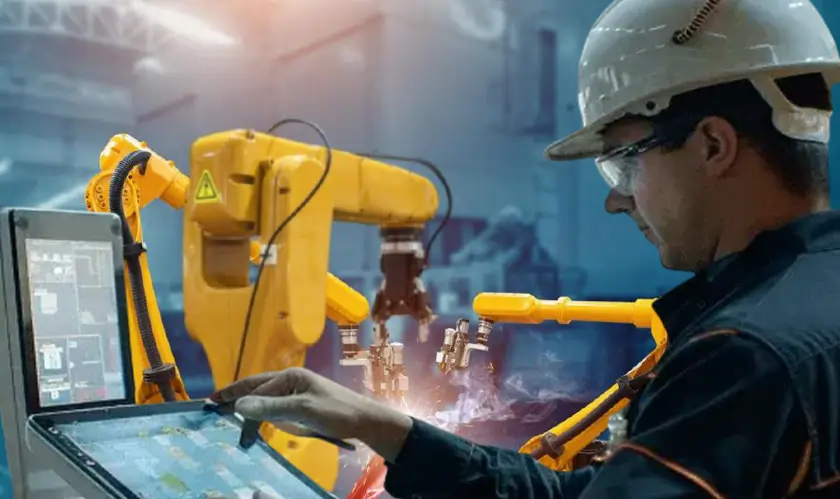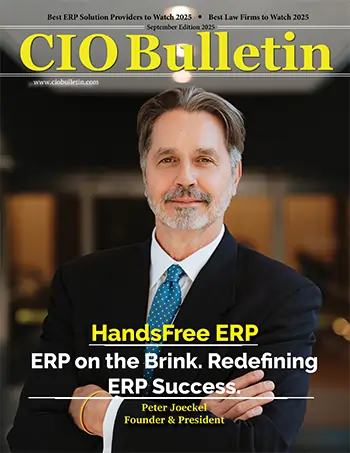Home Technology Automation Lean Automation: Bridging Indu...
Automation

CIO Bulletin
11 March, 2022
As fulfillment operations continue to scale to meet the demands of e-commerce, a pivotal shift is occurring from traditional lean manufacturing techniques to intelligent automation systems. This paper explores the integration of lean principles, such as Kaizen and Value Stream Mapping (VSM), with automation and artificial intelligence (AI) in modern fulfillment centers. By developing a new framework that merges these areas, the paper offers insights into how fulfillment centers can achieve higher efficiency, continuous improvement, and real-time optimization. The contribution of this research lies in creating a lean automation framework that blends traditional industrial engineering with adaptive intelligence, providing a scalable and future-proof approach for fulfillment operations.
Historically, the core principles of lean manufacturing—emphasizing efficiency, waste reduction, and continuous improvement—have dominated operations management in sectors like automotive, manufacturing, and warehousing. Techniques such as Kaizen (continuous improvement), Value Stream Mapping (VSM), and Just-in-Time (JIT) have enabled firms to streamline their operations, reduce costs, and enhance productivity. However, as the scale of fulfillment operations has dramatically expanded with the growth of e-commerce, traditional lean practices alone are no longer sufficient to keep pace with customer expectations for faster deliveries and real-time order tracking.
The distribution landscape has undergone significant evolution over the past two decades, transitioning from centralized, low-cost mega-hubs toward more distributed, demand-sensitive architectures. Much of the early literature on distribution design focused on minimizing transportation cost, facility count, and network complexity (Simchi-Levi et al., 2008). However, this model has proven increasingly unsuitable as demand volatility, and the need for agile, flexible systems have come to the fore.
The proposed Lean Automation Framework (LAF) integrates lean principles with AI and automation systems, creating a flexible, real-time optimization model for fulfillment centers. This hybrid framework consists of three core components:
1. Continuous Improvement through AI-Driven Feedback Loops: The Kaizen principle of continuous improvement is embedded in the framework through the use of AI-based feedback loops. These loops enable real-time analysis of performance data, such as pick accuracy, cycle times, and equipment downtime.
2. Value Stream Mapping Enhanced by Automation: Value Stream Mapping (VSM) remains central to identifying bottlenecks and inefficiencies in fulfillment operations. However, the VSM process is enhanced by automated data collection systems (via sensors, RFID, etc.) that track inventory movements and order fulfillment progress in real-time.
3. Real-Time Optimization and Lean Scheduling: The final pillar of the framework focuses on real-time optimization. Using machine learning algorithms, fulfillment centers can dynamically allocate resources (e.g., labor, robots, storage) to tasks based on demand fluctuations, capacity constraints, and other real-time factors.
Amazon is a prime example of an organization that has successfully integrated lean principles with automation. Amazon’s fulfillment centers use Kaizen-driven practices, continuously improving processes such as order-picking and packaging. In 2019, Amazon began integrating AI and robotics into its fulfillment operations, using Kiva robots to assist with inventory management and order picking. AI-driven systems optimize routing and product placement, ensuring that high-demand products are easily accessible, reducing pick times and increasing throughput.
Results:
Walmart has also adopted lean principles in its fulfillment centers, with a growing emphasis on automation. In 2020, Walmart expanded its use of AI-driven demand forecasting and robotic process automation (RPA) in fulfillment centers. By integrating AI with lean principles like JIT inventory management and standardized work procedures, Walmart achieved significant improvements in supply chain responsiveness and operational efficiency.
Results:
This paper demonstrates that combining lean manufacturing principles with AI and automation technologies creates a robust framework for optimizing fulfillment center operations. By integrating Kaizen-driven continuous improvement with real-time AI-driven optimization, the Lean Automation Framework (LAF) enables fulfillment centers to become more adaptive, scalable, and efficient in meeting the growing demands of e-commerce. The framework’s three core components—AI-driven feedback loops, automated value stream mapping, and real-time resource optimization—allow businesses to streamline their operations, reduce costs, and enhance throughput. Companies like Amazon and Walmart have successfully applied these principles to improve operational performance and customer satisfaction.
However, to stay competitive in an increasingly complex environment, fulfillment centers must embrace emerging technologies. IoT, blockchain, and edge computing offer significant opportunities to further enhance the capabilities of lean automation systems. IoT can provide real-time monitoring and predictive maintenance, while blockchain ensures greater transparency and security in operations. Edge computing reduces latency, enabling faster decision-making and improving overall responsiveness. Also, as sustainability becomes more important, lean automation will also help companies reduce their environmental impact. By optimizing workflows and minimizing waste, companies can improve their carbon footprint while achieving cost savings.
Future research should focus on the integration of these technologies into the Lean Automation Framework and explore their application in reverse logistics and returns management. By further developing this framework, businesses can create more efficient, sustainable, and scalable fulfillment operations. In conclusion, lean automation combined with emerging technologies offers a pathway to achieving operational efficiency, sustainability, and customer-centricity. Fulfillment centers that adopt this integrated approach will be better positioned to meet the evolving demands of e-commerce, ensuring long-term competitiveness in the market.
[1] Womack, J. P., & Jones, D. T. (2003). Lean Thinking: Banish Waste and Create Wealth in Your Corporation. Free Press.
[2] Schmidt, C., et al. (2020). Artificial Intelligence in Logistics: State of the Art, Challenges, and Future Directions. Logistics, 4(3), 15–29.
[3] Ivanov, D., et al. (2019). Digital Twin and AI in Logistics: Applications and Challenges. International Journal of Production Research, 57(5), 1443-1465.
[4] Simchi-Levi, D., Kaminsky, P., & Simchi-Levi, E. (2008). Designing and Managing the Supply Chain: Concepts, Strategies and Case Studies. McGraw-Hill.
[5] Amazon Inc. (2020–2021). Operations and Logistics Network Overview. Internal Reports.
[6] Pitney Bowes. (2021). Parcel Shipping Index. Retrieved from https://www.pitneybowes.com
[7] Deloitte. (2021). The Future of Distribution in Retail and CPG. Industry Benchmarking Report.
[1] Womack & Jones (2003) are foundational in the lean manufacturing literature, providing the theoretical basis for the lean principles applied in fulfillment operations.
[2] Schmidt et al. (2020) discuss AI in logistics, touching on the areas where AI can intersect with lean systems, though they stop short of integrating both.
[3] Ivanov et al. (2019) highlight digital twin and AI technology in logistics, contributing to understanding AI’s potential role in enhancing lean-based fulfillment systems.
[4] Simchi-Levi et al. (2008) offer key insights into supply chain optimization, which complements the lean principles applied in fulfillment operations.
[5] Amazon Inc. (2020–2021) provides a real-world case of how automation and AI are integrated into fulfillment centers, illustrating a high-level example of lean automation.
[6] Pitney Bowes (2021) offers parcel shipping insights, which align with lean optimization in logistics and distribution.
[7] Deloitte (2021) explores future trends in supply chain management, highlighting the need for combining AI and lean for efficiency.







